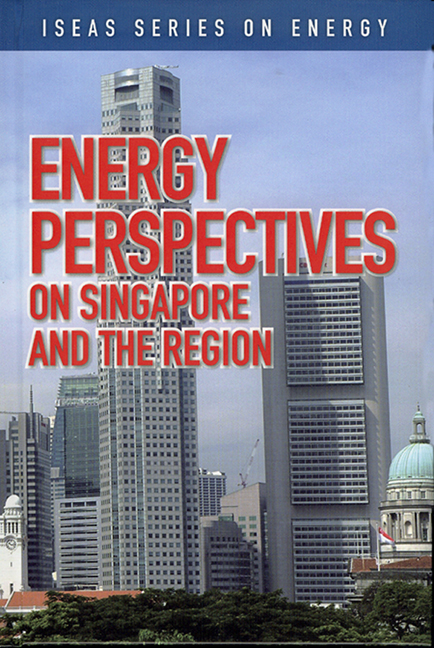Book contents
- Frontmatter
- Contents
- Foreword
- Preface
- The Contributors
- 1 Overview of Singapore's Energy Situation
- 2 Singapore's Changing Landscapes in Energy
- 3 Singapore's Role as a Key Oil Trading Centre in Asia
- 4 Large-Scale Solar PV Power Generation in Urban High-Rise Buildings in Singapore
- 5 The High-Carbon Story of Urban Development in Southeast Asia
- 6 Renewable Energy and the Environment: Technology and Economic Perspectives
- 7 Delivering Results in a Booming Rig Market
- 8 The Success Story of Rig Building in Singapore
- 9 The Singapore Oil Situation
- 10 Singapore Petroleum Company: Adding Value to the Singapore Oil Industry
- 11 Oil Storage: The Singapore Story
- REGIONAL and INTERNATIONAL
- Index
9 - The Singapore Oil Situation
Published online by Cambridge University Press: 21 October 2015
- Frontmatter
- Contents
- Foreword
- Preface
- The Contributors
- 1 Overview of Singapore's Energy Situation
- 2 Singapore's Changing Landscapes in Energy
- 3 Singapore's Role as a Key Oil Trading Centre in Asia
- 4 Large-Scale Solar PV Power Generation in Urban High-Rise Buildings in Singapore
- 5 The High-Carbon Story of Urban Development in Southeast Asia
- 6 Renewable Energy and the Environment: Technology and Economic Perspectives
- 7 Delivering Results in a Booming Rig Market
- 8 The Success Story of Rig Building in Singapore
- 9 The Singapore Oil Situation
- 10 Singapore Petroleum Company: Adding Value to the Singapore Oil Industry
- 11 Oil Storage: The Singapore Story
- REGIONAL and INTERNATIONAL
- Index
Summary
INTRODUCTION
Singapore plays a key role in the world and in Southeast Asia as the third largest oil refiner, after Rotterdam and Houston, and as a swing refiner, supplying oil products to ASEAN countries when they need such products. This chapter examines issues related to Singapore's capacities in oil refining, oil storage, import and export of oil and gas, and related issues.
REFINING CAPACITY
The Singapore Refining Capacity remains at 1.3 million barrels (bbl) per stream day. Except for some de-bottlenecking at ExxonMobil, the last refining unit, a condensate splitter was added by Shell in 2003 (please refer to Table 9.1).
During 1996–99, there was a surplus in refining capacity around the region and our refineries were running at 60 per cent operating capacity. The situation changed dramatically in 2003 and currently, there is a shortage in refining capacity and thus most refineries are running practically at full capacity.
Recently in 2006, Concorde Energy announced that they will put up a condensate splitter of 75,000 bbl per day, which will probably be operational by 2008. This will bring up Singapore's refining capacity to 1.4 million bbl per stream day.
Due to Singapore's strategic position, straddled between East and West Asia, its refineries have always been in a position of a swing refinery, that is, we cater to unscheduled shutdowns of refineries in the region and to abnormal swings in demand due to weather or other calamities.
CRUDE IMPORT
Since our refineries were mostly designed and built in the early 1970s, before the first energy crisis, it is not surprising that all of them were designed to run on Middle-Eastern crude. Thus, in most years the composition of the crude oil imported from the Middle Eastern countries exceed 80 per cent (please refer to Table 9.2).
Today, the Middle East seems to be a volatile area. Thus, any major mishap in that region will be a serious blow to Singapore's oil industry.
- Type
- Chapter
- Information
- Energy Perspectives on Singapore and the Region , pp. 91 - 97Publisher: ISEAS–Yusof Ishak InstitutePrint publication year: 2007

